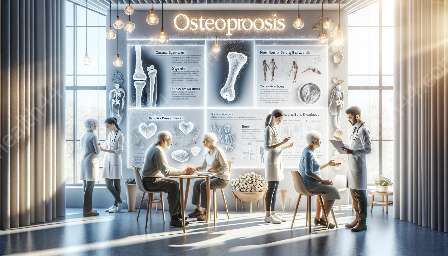Osteoporosis is a condition characterized by weakened bones, making them fragile and more susceptible to fractures. Left untreated, osteoporosis can lead to severe complications and consequences that impact an individual's quality of life. In this article, we explore the various complications and consequences of osteoporosis, including fractures, pain, and mobility issues, and discuss how it interacts with other health conditions.
Fractures
One of the most significant complications of osteoporosis is an increased risk of fractures. Due to weakened bone density, individuals with osteoporosis are more likely to experience fractures, particularly in the hip, spine, and wrist. Fractures can be debilitating, causing pain, loss of mobility, and a decreased ability to perform daily activities. In severe cases, hip fractures may require surgical intervention and rehabilitation, leading to prolonged hospital stays and potential complications.
Chronic Pain
Osteoporosis-related fractures and structural changes in the vertebrae can result in chronic pain. Vertebral fractures, in particular, can cause persistent back pain, reduced mobility, and a decreased quality of life. Chronic pain can impact an individual's physical and emotional well-being, leading to limitations in activities and a higher risk of depression and isolation.
Mobility Issues
Weakened bones and the risk of fractures can significantly affect an individual's mobility. Fear of falling and sustaining a fracture can lead to increased cautiousness, reduced physical activity, and a decline in muscle strength and balance. These factors contribute to a higher risk of falls and fractures, further exacerbating mobility issues and potentially leading to a loss of independence.
Spinal Deformities
Osteoporosis can cause the spine to weaken and collapse, leading to spinal deformities such as kyphosis, commonly referred to as a dowager's hump. These structural changes can result in a stooped posture, reduced lung capacity, and discomfort. Spinal deformities not only impact physical appearance but also contribute to limitations in movement and respiratory function.
Increased Healthcare Costs
The complications of osteoporosis, particularly fractures, chronic pain, and mobility issues, can result in increased healthcare costs. Individuals with osteoporosis may require frequent medical consultations, diagnostic tests, treatments, and rehabilitation services. Moreover, hospitalizations for fracture management and associated complications contribute to the economic burden of osteoporosis on healthcare systems and individuals.
Impact on Daily Life
The consequences of osteoporosis deeply affect an individual's daily life. Chronic pain, mobility limitations, and the fear of fractures can lead to a loss of independence, reduced social engagement, and a decreased ability to perform activities of daily living. Maintaining a job, pursuing hobbies, and participating in social activities may become challenging, impacting an individual's overall well-being and mental health.
Interaction with Other Health Conditions
Osteoporosis can interact with other health conditions, further complicating management and treatment. Individuals with osteoporosis may have comorbidities such as cardiovascular diseases, diabetes, and arthritis, which can impact bone health and fracture risk. Moreover, certain medications used to manage other health conditions, such as corticosteroids and anticonvulsants, can contribute to bone loss and increase the risk of osteoporotic fractures.
Beyond physical health, the consequences of osteoporosis can affect an individual's mental and emotional well-being, leading to anxiety, depression, and a reduced quality of life. Support from healthcare providers, family, and community resources is essential in addressing the emotional impact of osteoporosis and helping individuals cope with the challenges it presents.
Understanding the complications and consequences of osteoporosis is crucial for raising awareness, promoting early detection, and implementing preventive strategies. By addressing osteoporosis and its potential impact on overall health, individuals can take proactive measures to preserve bone health, reduce fracture risk, and maintain a fulfilling and independent lifestyle.


